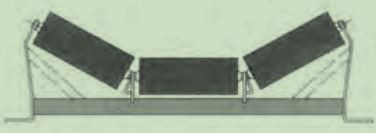 Afrikaans
Afrikaans  Albanian
Albanian  Amharic
Amharic  Arabic
Arabic  Armenian
Armenian  Azerbaijani
Azerbaijani  Basque
Basque  Belarusian
Belarusian  Bengali
Bengali  Bosnian
Bosnian  Bulgarian
Bulgarian  Catalan
Catalan  Cebuano
Cebuano  Corsican
Corsican  Croatian
Croatian  Czech
Czech  Danish
Danish  Dutch
Dutch  English
English  Esperanto
Esperanto  Estonian
Estonian  Finnish
Finnish  French
French  Frisian
Frisian  Galician
Galician  Georgian
Georgian  German
German  Greek
Greek  Gujarati
Gujarati  Haitian Creole
Haitian Creole  hausa
hausa  hawaiian
hawaiian  Hebrew
Hebrew  Hindi
Hindi  Miao
Miao  Hungarian
Hungarian  Icelandic
Icelandic  igbo
igbo  Indonesian
Indonesian  irish
irish  Italian
Italian  Japanese
Japanese  Javanese
Javanese  Kannada
Kannada  kazakh
kazakh  Khmer
Khmer  Rwandese
Rwandese  Korean
Korean  Kurdish
Kurdish  Kyrgyz
Kyrgyz  Lao
Lao  Latin
Latin  Latvian
Latvian  Lithuanian
Lithuanian  Luxembourgish
Luxembourgish  Macedonian
Macedonian  Malgashi
Malgashi  Malay
Malay  Malayalam
Malayalam  Maltese
Maltese  Maori
Maori  Marathi
Marathi  Mongolian
Mongolian  Myanmar
Myanmar  Nepali
Nepali  Norwegian
Norwegian  Norwegian
Norwegian  Occitan
Occitan  Pashto
Pashto  Persian
Persian  Polish
Polish  Portuguese
Portuguese  Punjabi
Punjabi  Romanian
Romanian  Russian
Russian  Samoan
Samoan  Scottish Gaelic
Scottish Gaelic  Serbian
Serbian  Sesotho
Sesotho  Shona
Shona  Sindhi
Sindhi  Sinhala
Sinhala  Slovak
Slovak  Slovenian
Slovenian  Somali
Somali  Spanish
Spanish  Sundanese
Sundanese  Swahili
Swahili  Swedish
Swedish  Tagalog
Tagalog  Tajik
Tajik  Tamil
Tamil  Tatar
Tatar  Telugu
Telugu  Thai
Thai  Turkish
Turkish  Turkmen
Turkmen  Ukrainian
Ukrainian  Urdu
Urdu  Uighur
Uighur  Uzbek
Uzbek  Vietnamese
Vietnamese  Welsh
Welsh  Bantu
Bantu  Yiddish
Yiddish  Yoruba
Yoruba  Zulu
Zulu conveyor belt roller types
Understanding Conveyor Belt Roller Types
Conveyor systems play a crucial role in various industries, facilitating the efficient movement of goods and materials. At the heart of these systems lies a critical component the conveyor belt roller. The roller type chosen can significantly impact the operational efficiency, maintenance costs, and overall lifespan of a conveyor system. In this article, we will explore the different types of conveyor belt rollers, their functions, and the factors to consider when selecting the appropriate roller for your needs.
1. Types of Conveyor Belt Rollers
Conveyor belt rollers can be categorized into several types based on their design and function
- Drive Rollers These rollers are powered and are responsible for moving the conveyor belt forward. They play a pivotal role in providing the necessary traction to transport materials.
- Idler Rollers These are non-powered rollers that support the belt and enable it to maintain tension and alignment. Idler rollers are vital for minimizing friction and wear on the belt.
- Return Rollers As the name implies, return rollers carry the belt back after it has discharged its load. They ensure that the belt runs smoothly on its return path.
- Impact Rollers Designed to absorb shocks and reduce damage, impact rollers are typically located at loading zones. They protect the belt from heavy loads dropping onto it.
- Guide Rollers These rollers help to keep the belt aligned, preventing misalignment and ensuring smooth operation. They are especially important in applications where the belt may be subjected to lateral forces.
Rollers can be made from various materials, each offering unique properties suited for different applications. Common materials include
conveyor belt roller types

- Steel Rollers Known for their durability and strength, steel rollers are ideal for heavy-duty applications. They can withstand substantial weights and harsh conditions.
- Plastic Rollers Lightweight and resistant to corrosion, plastic rollers are suitable for environments where moisture and chemicals are present. They often find use in food processing and packaging industries.
- Rubber Coated Rollers By providing additional grip, rubber-coated rollers are used in applications where enhanced traction is required, such as in incline or decline conveyor systems.
3. Factors to Consider When Selecting Rollers
When choosing conveyor belt rollers, several factors must be considered
- Load Capacity Determine the weight and type of materials being transported to select rollers that can handle the load without deformation or failure.
- Environmental Conditions Consider the operating environment, such as exposure to chemicals, moisture, or extreme temperatures, as these can affect roller performance.
- Maintenance Some roller types require more maintenance than others. Choosing low-maintenance rollers can reduce downtime and operational costs.
- Cost While high-quality rollers may have a higher upfront cost, their durability and efficiency can lead to long-term savings.
Conclusion
Selecting the right conveyor belt roller is vital for the efficient operation of any conveyor system. By understanding the different types of rollers available, their materials, and the factors influencing selection, businesses can optimize their conveyor systems for better performance, longevity, and reduced operational costs. Whether in manufacturing, logistics, or any other industry, making informed choices about conveyor belt rollers can lead to significant advantages in productivity and reliability.
-
Revolutionizing Conveyor Reliability with Advanced Rubber Lagging PulleysNewsJul.22,2025
-
Powering Precision and Durability with Expert Manufacturers of Conveyor ComponentsNewsJul.22,2025
-
Optimizing Conveyor Systems with Advanced Conveyor AccessoriesNewsJul.22,2025
-
Maximize Conveyor Efficiency with Quality Conveyor Idler PulleysNewsJul.22,2025
-
Future-Proof Your Conveyor System with High-Performance Polyurethane RollerNewsJul.22,2025
-
Driving Efficiency Forward with Quality Idlers and RollersNewsJul.22,2025





























